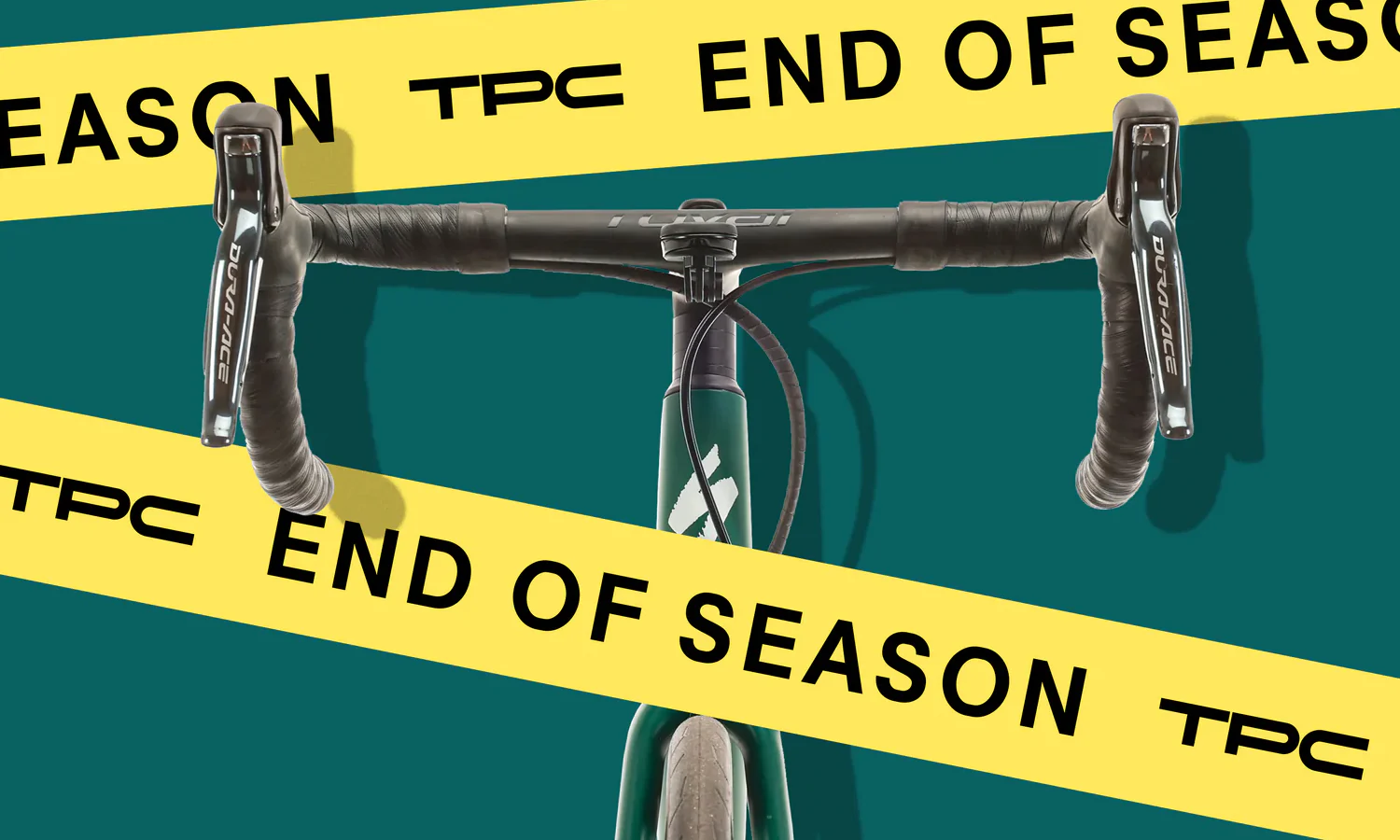Shimano is the component world’s heavyweight champ, dominating sales and winning many riders' hearts and minds. Major competitors like SRAM and Campagnolo hold their own and have loyal fans, but If you’re looking for a new or used road bike, chances are good that it'll be a Shimano-equipped bike.
In our Shimano vs. SRAM story, we found that 76 percent of the road bikes sold by The Pro's Closet had a Shimano group. It is far-and-away the most ubiquitous component manufacturer. Competitors like SRAM offer great alternatives, such as the AXS drivetrains, and they’re sure to steal market share in the future, but right now, most people in the market for a road bike will end up choosing from bikes with Shimano drivetrains.
Let's start with Shimano’s component hierarchy, in order from basic to top-of-the-line:
| Level | Group |
| Budget basic | Claris |
| Entry-level | Sora |
| Mid-level | Tiagra |
| Enthusiast | 105 |
| High-end | Ultegra |
| Pro-level | Dura-Ace |
Many beginner- and budget-focused bikes are equipped with Claris, Sora, or Tiagra groups. These entry-level groups will satisfy the needs of most recreational and casual cyclists. But for anyone interested in performance, or a more refined road bike, the groups in the upper half of Shimano's catalog — 105, Ultegra, and Dura-Ace — are where you should look.
How do you know which Shimano group is right for you? The top three groups are very similar and offer many of the same features. This article will consider the differences in price, weight, and performance to help you decide what you should choose for your next bike.
Background
 A full Shimano Ultegra R8000 group consisting of shifters, front and rear derailleurs, crankset, cassette, chain, and brakes.
A full Shimano Ultegra R8000 group consisting of shifters, front and rear derailleurs, crankset, cassette, chain, and brakes.
UPDATE - Feb 2, 2022: For 2022, Shimano has released its new road groups. The current generation is now Dura-Ace R9200 and Ultegra R8100 and they are electronic-only. We expect a new 105 group to be released very soon too. The general trends and differences between the groups outlined here still hold true, though the exact numbers may differ.
Shimano denotes its group generations with a numbered system. The current generations of the 105, Ultegra, and Dura-Ace groups are called “105 R7000,” “Ultegra R8000,” and “Dura-Ace R9100,” respectively.
When looking at Shimano-equipped bikes on The Pro’s Closet, this model series number will be listed in the specifications.
If you're looking at older bikes, the previous two iterations of 105 were called “105 5800” and “105 5700.” The previous two iterations of Ultegra were “Ultegra 6800” and “Ultegra 6700.” The previous two iterations of Dura-Ace were “Dura-Ace R9000” and “Dura-Ace 7900.”
Shimano releases new generations about every four to five years. Dura-Ace is generally updated first, with Ultegra and 105 updates coming over the following two years. The latest Dura-Ace 9100 group was released in 2016, followed by Ultegra R8000 in 2017, and 105 R7000 in 2018. It’s likely a new Dura-Ace (probably called R9200) is already in the works.
The current generation of Shimano 105, Ultegra, and Dura-Ace groups are all 11-speed. The previous generation (5800, 6800, R9000) are also 11-speed. The generation before that (5700, 6700, 7900) were all 10-speed groups.
All three groups are available as mechanical groups with rim brakes or hydraulic disc brakes. Ultegra and Dura-Ace are also available as electronic Di2 groups that offer electronic shifting with rim or disc brakes.
Trickle-down technology
Shimano is known for trickling down technology from its top-of-the-line Dura-Ace group to the Ultegra and 105 groups. Because of this, current-generation 105 and Ultegra groups could be considered a step up from the previous generation Dura-Ace group. This can be down to interpretation, however, because the main things that separate the three groups are weight, materials, and manufacturing. Even though a current 105 group may have newer technology than an older Dura-Ace group, some riders still consider the older Dura-Ace group to be more refined due to its lighter materials and better machining and finish.
Cost
Price is the most noticeable difference for riders comparing road bikes equipped with 105, Ultegra, and Dura-Ace groups. A frame built with Dura-Ace will cost significantly more than the same frame built with 105. An Ultegra build will land somewhere in the middle. These prices reflect the least-expensive mechanical, rim brake groups, with chain and bottom bracket included:
|
Group
|
Price |
| 105 R7000 | $649.95 |
| Ultegra R8000 | $1049.95 |
| Dura-Ace R9100 | $1999.95 |
It is possible to find complete groups at discounted prices online, but these numbers reflect the manufacturer’s suggested retail price. They show that each group is nearly twice as expensive as the group below it. For some riders, especially novice and casual riders, the retail price of a Dura-Ace group alone might blow their budget for a complete bike. (Read our article on how much beginners should spend on their first bike to learn more.)
Components have a major influence on the bike’s total cost. As a very broad generalization, 105 groups will often be found on bikes in the $1,000-3,000 range, Ultegra groups on bikes in the $2,500-4,500 range, and Dura-Ace groups on bikes that cost $4,000+.
Of course, there are plenty of bikes that fall outside of these ranges, especially when looking at pre-owned road bikes. Bikes with past-generation Shimano groups also fall outside of these ranges, allowing riders to save on used bikes with older Dura-Ace. But it gives you a basic sense of how much you’ll likely spend on a bike with a specific group.
Manufacturers get price breaks for buying large quantities of components for original equipment (OE) spec, so it is generally more economical buy a complete bike than it is to buy a bike and upgrade the full group later, or build a bike up from a frame (though that does have its own benefits).
So what do these differences in price get you?
Technology, weight, and materials
The main things that separate the three groups are weight, materials, and manufacturing. The top-of-the-line Dura-Ace group will be the lightest, and it will use expensive and exotic materials like titanium and carbon fiber more liberally. Certain components will feature more extensive machining. The rear derailleur is a good example.
 Compared to a 105 derailleur, the Dura-Ace derailleur has less material. More time has been spent to machine away excess metal, reducing the weight. The difference is slight, but parts of the Dura-Ace derailleur are visibly slimmer, with more beveled edges. This machining takes time and effort, increasing the cost, but it will save around 60-70 grams over the 105 derailleur. Ultegra also features more machining than 105, but less than Dura-Ace.
Compared to a 105 derailleur, the Dura-Ace derailleur has less material. More time has been spent to machine away excess metal, reducing the weight. The difference is slight, but parts of the Dura-Ace derailleur are visibly slimmer, with more beveled edges. This machining takes time and effort, increasing the cost, but it will save around 60-70 grams over the 105 derailleur. Ultegra also features more machining than 105, but less than Dura-Ace.
The Dura-Ace (and Ultegra) rear derailleurs also use more expensive and higher quality bearings that marginally reduce drivetrain friction. This can save a watt or two but it’s unlikely you’ll feel it in the saddle. Finally, the Dura-Ace rear derailleur's finish is much nicer. Dura-Ace components, like the crankset and derailleurs, are finished with what Shimano calls “mirror black.” It’s glossy with a hint of sparkle. I find it very attractive and photos don’t really capture how good it looks in person. 105 has a bit more of a bland satin look, but that might appeal to less ostentatious riders.
Other than these differences in weight, bearings, and aesthetics, the derailleurs are largely the same. Current Dura-Ace, Ultegra, and 105 rear derailleurs all use Shimano’s Shadow technology, brought over from its mountain bike rear derailleurs. The rear derailleur profile is narrower when you look at the bike from the rear, sitting 12mm closer to the bike when in the bottom cog of the cassette. This means if you crash or the bike falls over on the drive-side, there is less chance of damaging the derailleur or bending your derailleur hanger. This technology has trickled down from Dura-Ace and gives the current Ultegra and 105 groups a small leg up on older generations.
Riders who do more gravel riding may be interested in the Ultegra RX rear derailleur, which adds a clutch mechanism to improve chain retention. Neither 105 nor Dura-Ace offers an RX option with a clutch so there is that small difference.
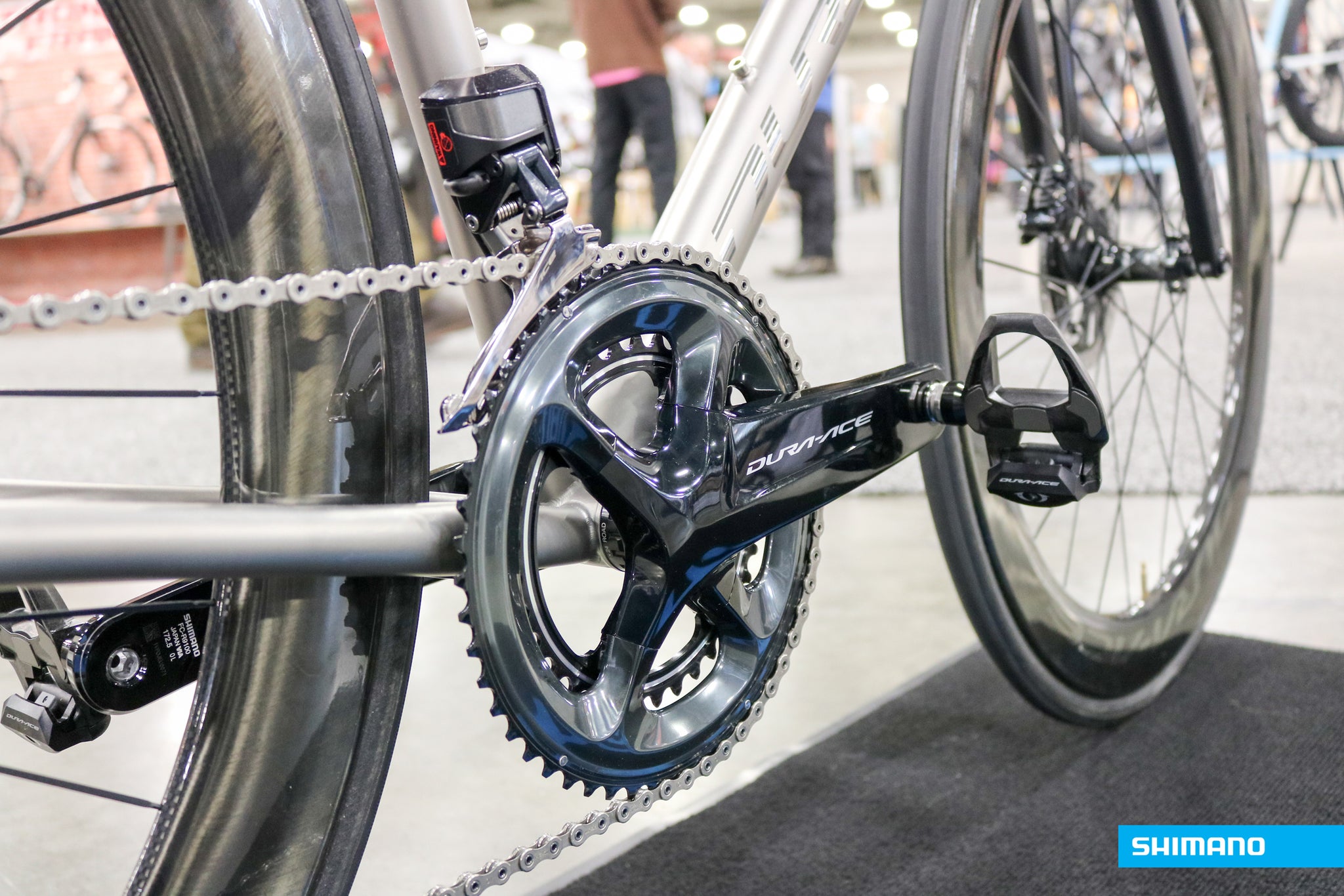 If we compare the machining and finish of the cranksets, it’s a similar story. The 105 crankset features a one-piece chainring design, where the inner and outer chainring are machined together and remain connected with splines. Dura-Ace, on the other hand, has machined inner and outer chainring as two separate pieces (Ultegra does as well). This allows much more material to be machined away, reducing weight.
If we compare the machining and finish of the cranksets, it’s a similar story. The 105 crankset features a one-piece chainring design, where the inner and outer chainring are machined together and remain connected with splines. Dura-Ace, on the other hand, has machined inner and outer chainring as two separate pieces (Ultegra does as well). This allows much more material to be machined away, reducing weight.
This difference isn’t visible unless you remove the crankset and look behind it. In my experience, the 105 design is a bit more susceptible to storing dirt and grime in all the recesses between the splines that connect the chainrings, but it’s not a huge issue. The weight difference, however, is more significant at nearly 120 grams.
In the looks department, again the eye-catching mirror black finish of the Dura-Ace crank just does it for me. For others, it can be too much. Ultegra splits the difference a bit with a two-tone matte and mirror finish on all its components.
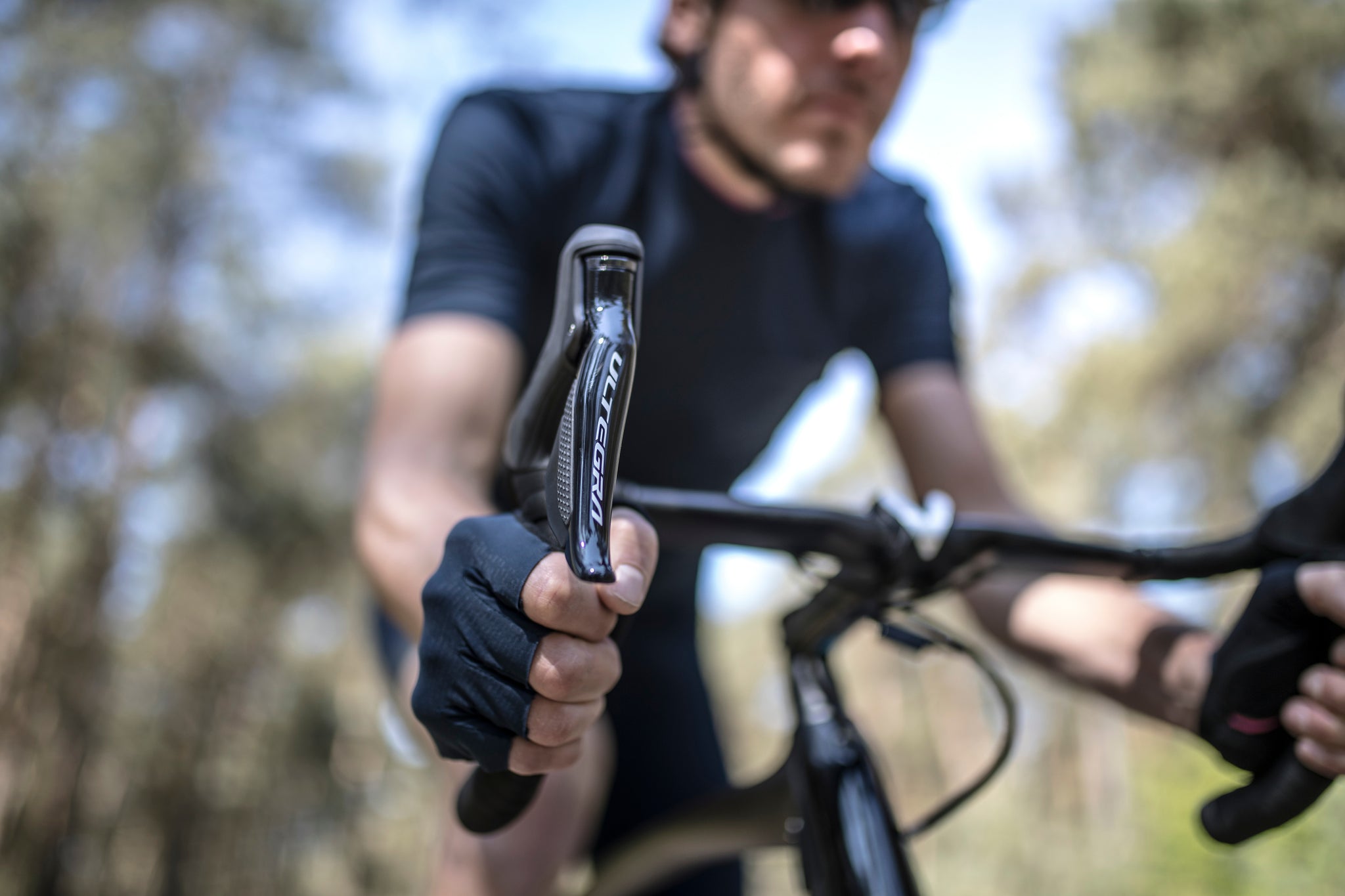 The only other areas riders will notice major differences in material choice are in the shifters and cassette. The shifters' internals are all the same, so shifters from all three groups function the same. Dura-Ace and Ultegra shifter, however, use carbon-fiber-reinforced plastic brackets and carbon levers while 105 has fiberglass-reinforced plastic brackets and aluminum levers. Dura-Ace shifters weigh up to 100 grams less as a result. Ultegra is around 30 grams heavier than Dura-Ace due to some slightly heavier internal hardware.
The only other areas riders will notice major differences in material choice are in the shifters and cassette. The shifters' internals are all the same, so shifters from all three groups function the same. Dura-Ace and Ultegra shifter, however, use carbon-fiber-reinforced plastic brackets and carbon levers while 105 has fiberglass-reinforced plastic brackets and aluminum levers. Dura-Ace shifters weigh up to 100 grams less as a result. Ultegra is around 30 grams heavier than Dura-Ace due to some slightly heavier internal hardware.
The cassettes use sprockets made from nickel-plated steel. The 105 cassette holds the larger cogs together with an aluminum spider and a nickel-plated steel lockring. The Ultegra cassette reduces weight with a carbon/aluminum spider and an anodized aluminum lockring. Dura-Ace takes it a step further with the five largest cogs all being made from titanium. Ultegra cassettes are about 25-35 grams lighter (depending on tooth count) than 105. Dura-Ace cassettes, amazingly, shed about 150 grams over the 105 cassettes. Keep in mind though, the titanium cogs make Dura-Ace cassettes very expensive to replace once they wear out.
Otherwise, components like the bottom bracket are exactly the same between groups. Chains will be marginally lighter as you move up from 105 to Dura-Ace due to machining. The rim and hydraulic disc brake calipers are more or less all the same. The rotors for the hydraulic disc brakes, however, are pretty different. The brake track is the same, but Dura-Ace level rotors feature larger and more prominent cooling fins which Shimano claims will drop the temperature of the rotors an additional 50 degrees Celcius.
Overall weight
Comparing the weight between complete groups, we can see the larger differences. We weigh all bikes and components at The Pro’s Closet so we have a good amount of data on the true weight of particular components. In general, Shimano is very accurate with their claimed weights and we’ve seen instances of a few rare components coming in 10-20 grams under the claimed weight. The weights provided below are added up using the lightest examples (all were mechanical disc groups) I was able to find in our shop over the last year:
| Group | Weight |
| 105 R7000 | 2,286 grams |
| Ultegra R8000 | 2,156 grams |
| Dura-Ace R9100 | 1,807 grams |
Will the approximately 200 grams Ultegra saves over 105 or the 480 grams Dura-Ace saves over 105 matter? Well, that’s up to you to decide. I’m a recovering weight weenie and seeing those numbers laid out in front of me, it’s very hard to not instantly choose to spend more for the lightest Dura-Ace option. But that may not be the right course of action for you. (Read our article "Does bike weight matter" to learn more.)
Ride feel
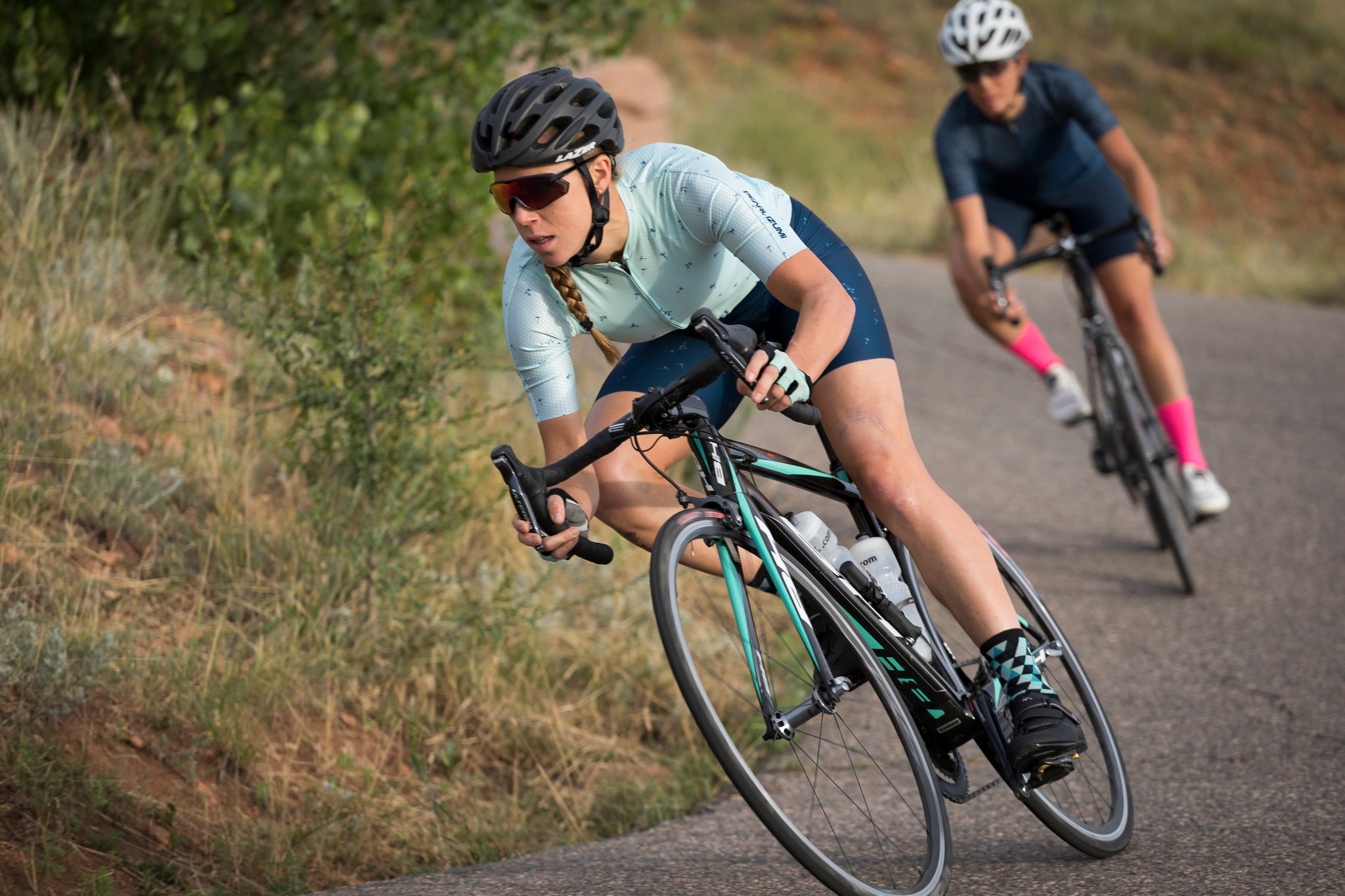
The shifters feel exactly the same in your hands. They have the same overall measurements and dimensions. Some riders claim the 105 shifters feel slightly bulkier but a simple check with calipers will disprove this.
When I press the paddles or levers to change gear, no matter the group, it shifts cleanly and precisely. I honestly can’t tell the difference. This is a good thing. It means riders who can’t afford higher-end Ultegra and Dura-Ace groups aren’t missing out on much in terms of feel and experience when riding their bikes. In a lot of ways. That’s what matters most. Perhaps incredibly perceptive riders might be able to feel a slight improvement in shift feel when moving up the groups, but regular people like me likely won't notice. Shimano’s current generation of groups has become so good, that’s they’re all just exceptional in terms of feel.
The one place feel really changes is with electronic shifting.
Electronic Di2 shifting
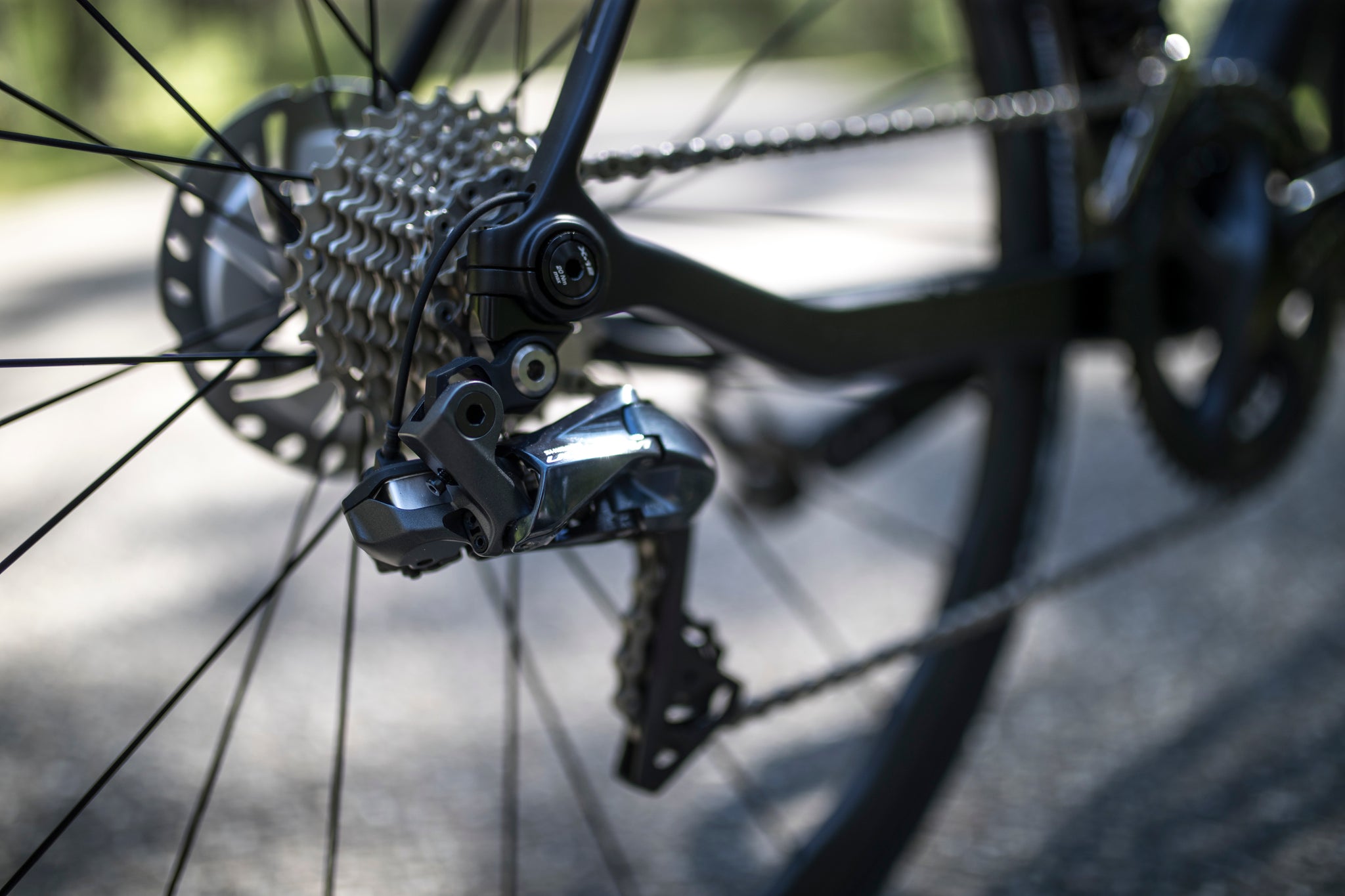 Current Shimano Di2 derailleurs are incredibly light and sleek.
Current Shimano Di2 derailleurs are incredibly light and sleek.
Both Ultegra and Dura-Ace are available as Ultegra Di2 and Dura-Ace Di2 electronic groups. There has yet to be a 105 level Di2 group.
UPDATE - Feb 2, 2022: For 2022, the current generation Dura-Ace R9200 and Ultegra R8100 groups are now electronic-only so there's no longer a distinction between Di2 and non-Di2 groups. We expect a new 105 group to be released very soon too and it may finally provide a 105 Di2 option.
Electronic shifting is already a big deal, and likely it’s the future of cycling. Shimano's Dura-Ace Di2 was the first commercially viable electronic drivetrain and its technology has trickled down to Ultegra Di2 over the last 10 years. Di2 uses electronic motors instead of cables to actuate the derailleurs and perform shifts. Nick Legan, road brand manager for Shimano North America, explains the advantages.
“The motors on the derailleurs actuate at the same rate every time,” says Legan. “That rate is paired to our chain, cassette, and chainrings. That timing is optimized with our electronic groups to shift perfectly for the shift ramp profiles. It’s a more consistent shift. You will hit the gear you want every time, perfectly. It does give you a competitive edge and most people who've ridden both will prefer Di2 because it's just a little more precise, and a little more accurate.”
Despite having to charge the battery, Di2 also requires less maintenance and tuning. It stands up to harsh, wet, and muddy riding conditions better than mechanical groups. It offers a host of other advantages I explained in an earlier article: Do you need electronic shifting?
Complete Ultegra and Dura-Ace Di2 groups are lighter than their mechanical counterparts by about 100 grams. Also, because the shifters no longer require room for mechanical internals, the hoods have a smaller, more streamlined shape that some riders prefer. This is good for riders who find the current mechanical hydraulic disc hoods to be slightly too bulky.
Electronic shifting alone puts Ultegra Di2 and Dura-Ace Di2 in a class above any of Shimano’s mechanical options. If you’re are looking for the best tech possible for your bike, these are the two Shimano groups to consider.
Gearing
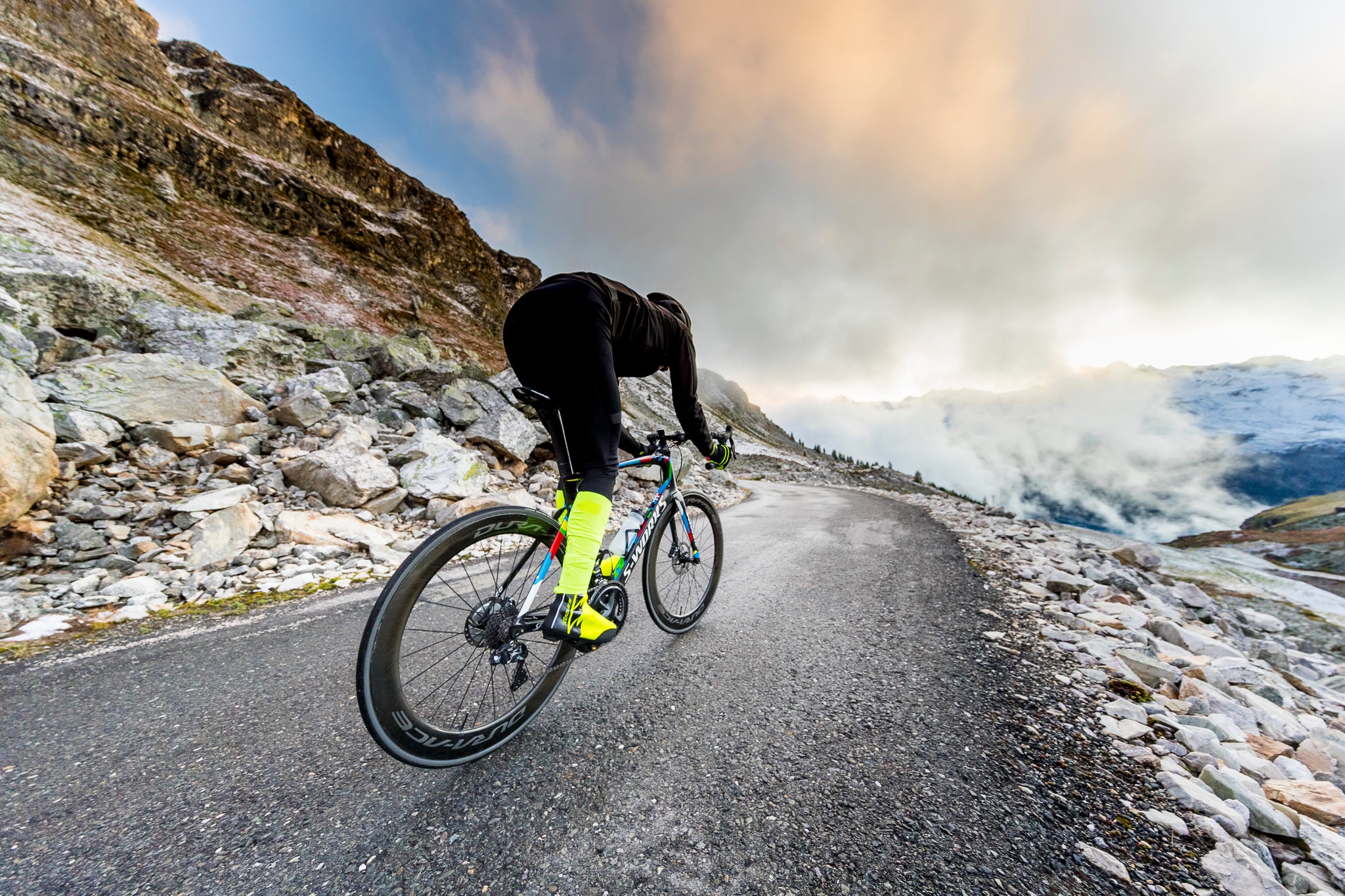 The ability to fit a bigger cassette can improve your gearing for climbing.
The ability to fit a bigger cassette can improve your gearing for climbing.
One final factor to consider is the gearing each group provides. All cranks can be found in standard (53/39t), mid (52/36t), and compact (50/34t) configurations. 105 and Ultegra essentially offer the same cassette options. Dura-Ace, however, offers fewer cassette options for riders who desire easier gears. This points to Dura-Ace’s history as the group chosen by professional racers who generally don’t need easier gearing.
Dura-Ace offers a single rear derailleur option that can accept up to an 11-30t cassette. Ultegra and 105 both have short-cage derailleurs that accept up to 11-30t cassettes, and mid-cage derailleurs that accept up to 11-34t cassettes.
Does this mean you’re out of luck if you want to use Dura-Ace and an 11-34t cassette? Well, Shimano has a reputation for being pretty conservative with its maximum cog recommendations. If you search online, you’ll find riders who have successfully run a Dura-Ace derailleur with up to a 36t large cassette cog. Some riders, looking for the most range possible have pushed the mid-cage 105 and Ultegra derailleur up to 40t.
Of course, none of this is recommended officially. Your mileage may vary, and if you choose to do it, you do so at your own risk. Ultimately, if you’re looking to swap to easier gears, Ultegra and 105 make it much easier.
Which Shimano group is for you?
So knowing the differences, how do you choose between the three. First and foremost, your budget is likely going to be the biggest factor. If you can’t afford to go higher than 105 then, your option is 105. But if you’re wondering if it’s worth it to spend more, there are three things to consider: marginal gains, prestige, and joy.
Marginal gains
 If you're in a race for the top, Dura-ace could make the difference.
If you're in a race for the top, Dura-ace could make the difference.
Because the three groups feel the same (for mechanical options — electronic groups are a different story), the major performance differences relate to weight.
Dave Lawrence, Shimano’s Road Product Manager explains, “Dura-Ace is Shimano’s no compromise, highest performance, and lightest-weight road groupset.”
For riders competing at the sharp end, who need every advantage possible, Dura-Ace is the only option. It’s what top pros choose when running Shimano on their own bikes.
For those who count grams and need the lightest bike possible, a sub-2,000 gram group like Dura-Ace makes building a sub-15 pound bike much easier. The time spent machining, and the liberal application of carbon and titanium all add up the blingiest and lightest option possible.
Of course, That all comes at a price. That’s what marginal gains are. You have to do a lot more (i.e., spend more money) to get a little bit in return. But if you’re competitive, that little bit might be just the edge you need. It's just going to cost you.
“But Ultegra represents the best balance of high performance and value,” says Lawrence. Ultegra makes the compromises Dura-Ace won’t. There’s less machining and attention to detail on all the pieces. Steel and aluminum are used more in the hardware and components. But Shimano has done just enough to satisfy those trying to balance high performance and cost."
Prestige
Dura-Ace is one of the most influential groups in the world. It’s been at the top for so long it’s the benchmark for drivetrain performance.
“It is where new technology is born,” says Lawrence. What happens with Dura-Ace can change the market. When Shimano introduced Dura-Ace Di2 in 2009, it sparked a revolution, and soon SRAM and Campagnolo had to follow with their own electronic groups.
Riders who obsess over bike tech love Dura-Ace because of what it represents. It is the pinnacle of performance. It's lust-worthy.
In my mind, choosing Dura-Ace won’t make your bike “better,” but it will make it “nicer.” I compare it to buying bananas in the grocery store. The organic bananas might cost 20 cents more than the regular bananas. Organic bananas are probably a bit healthier. But if you gave me both and didn’t tell me which was which, I probably wouldn’t be able to tell the difference. They taste more or less the same. But it’s the label and the extra bit of work put behind it that makes the difference. Some people just prefer the organic option.
Unfortunately, you can want these things but they can still be out of reach. But that’s why the lower end groups exist.
“Shimano 105 is the gateway to Shimano’s top-level road performance,” says Lawrence. It gives you the same feel and technology, but at a greatly reduced price. You may pay for it with weight, aesthetics, or refinement, but it still allows you to have the same riding experience. In the end, it’s the ride that should matter most.
Joy
Joy is hard to quantify. But some riders are just happier with having the best equipment, whether or not they actually need it. That’s totally fine!
“The fascination some of us have with cycling is not just the experience of riding a bicycle outside, but it's also with the thing itself,” says Nick Legan. “The bicycle is really compelling and we're interested in the technology.”
Much of the joy I experience with bikes come from trying to make my own bikes as nice as possible. Having a high-end drivetrain sparks joy (yes, I’ve been reading “The Life-Changing Magic of Tidying Up”). It helps me appreciate my bikes. It motivates me to take good care of them, clean them, and tune them regularly. A bike I love pushes me to go out and ride, train, and improve. It adds to my enjoyment of cycling, and that alone is worth it to me.
Is it worth it to you? Well, again, it depends a bit on your personality. Plenty of riders will be happy on 105 because the prestige of Dura-Ace isn’t that important to them. But if you’re constantly drooling over Dura-Ace bikes, that probably will make you the happiest.
Final thoughts
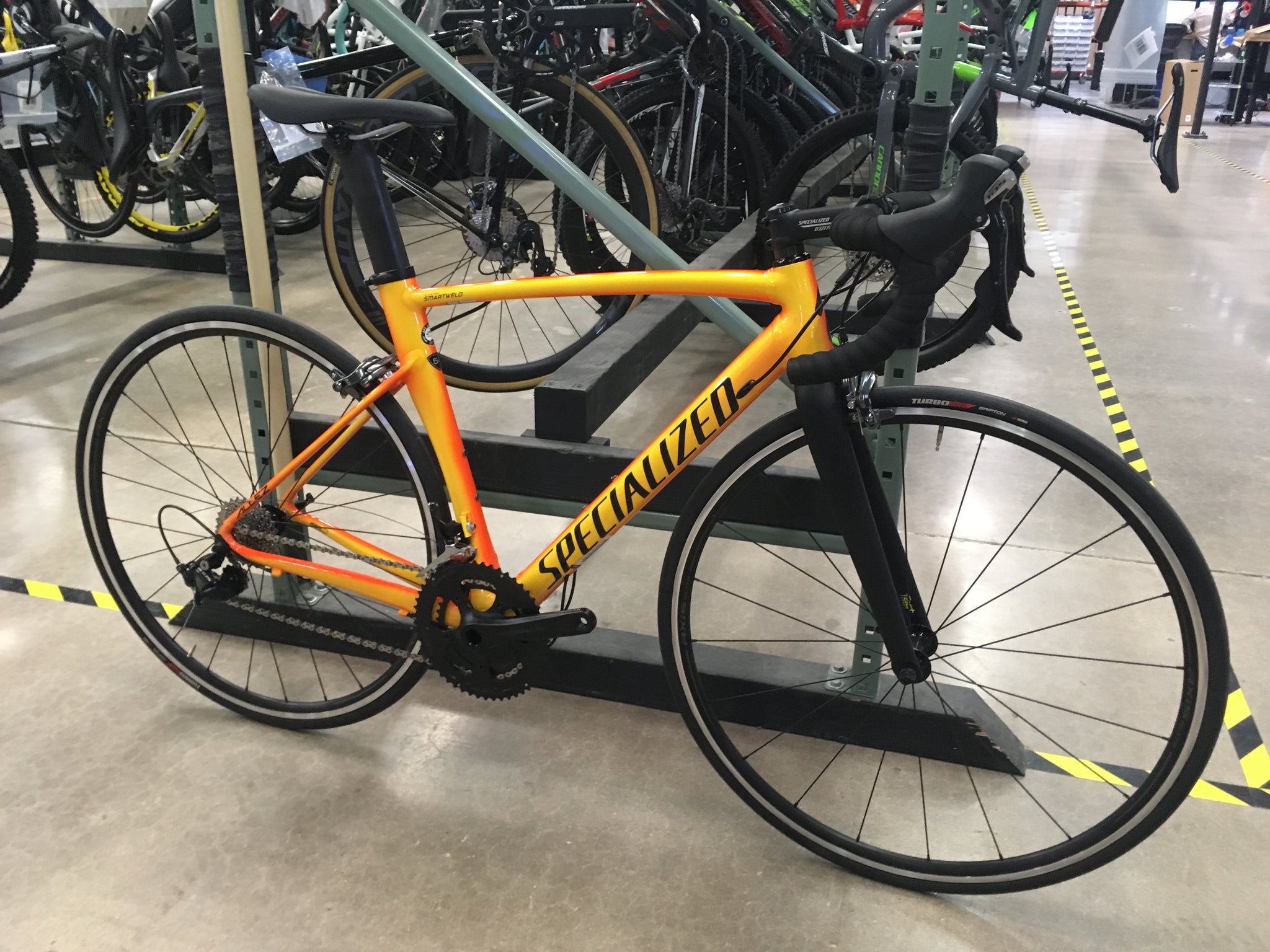
My first “serious” road bike was equipped with 10-speed Shimano 105. It worked flawlessly, and I rode and abused this bike for years. It was the bike that ignited my love of cycling and sent me down the path of tech obsession. Like Lawrence said, it was my gateway. Though my bike was fine, I hungered for something “better.” After a couple of years, I upgraded and moved onto a bike with Ultegra. I rode more, set bigger goals, and began competing. Then, eventually, I moved to an expensive super-bike equipped with Dura-Ace.
My upgrade path followed my progression as a rider. As I got faster, fitter, and more skilled, I upgraded accordingly. I felt that any improvement as a rider warranted better bikes and components.
I’ve jumped around in recent years, going back and forth between the three groups. Am I faster on a Dura-Ace bike? No, of course not. As always, the rider matters more than the bike. When I was at my fittest, I happened to be riding 105.
If you’re practical and want a bike that will work reliably for years and handle regular riding and some racing, 105 is hard to beat. It’s affordable, robust, and effective. I ride just as well on a 105 bike as I do on Dura-Ace. But Dura-Ace is what I’m most attracted to. The finish is gorgeous. Its quality and prestige bring me joy. My Dura-Ace bike is the one I’ll hang above my bed and stare at. It’s the bike I’ll pose for elaborate glamour shots. It’s the bike that motivates me to train and improve. It’s the one that makes me happiest because refined, beautiful objects just make me happy. I know this about myself, and that’s why I try to buy high-end components when I can.
That may not be you. If you’re somewhere between extremes of practicality and me, then Ultegra might be the right option. In general, Ultegra is the best happy medium option that provides many of the benefits of the top-of-the-line Dura-Ace group without a massive increase in price over the 105 group.
Do you ride 105, Ultegra, or Dura-Ace? Which is the best group for you? Let us know in the comments!
All photos courtesy of Shimano.


